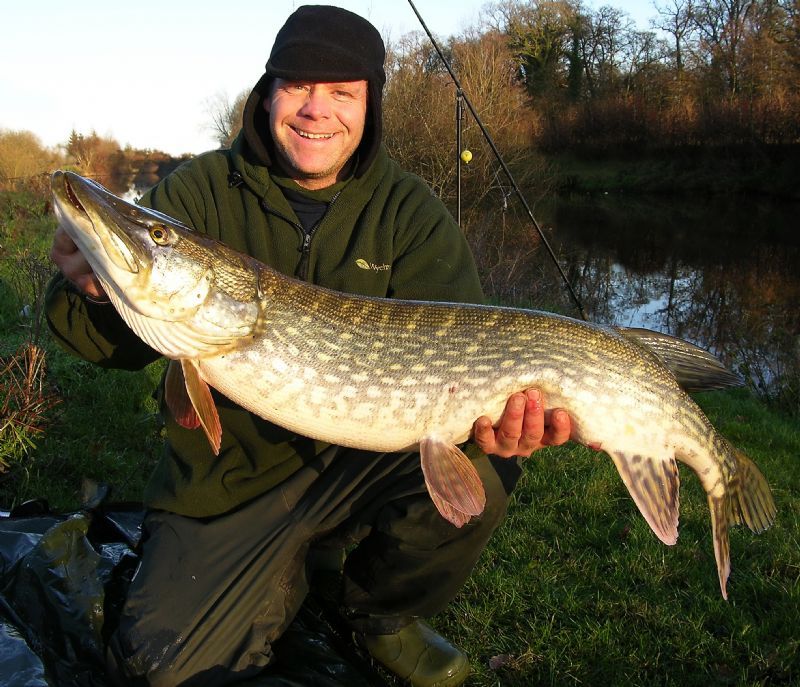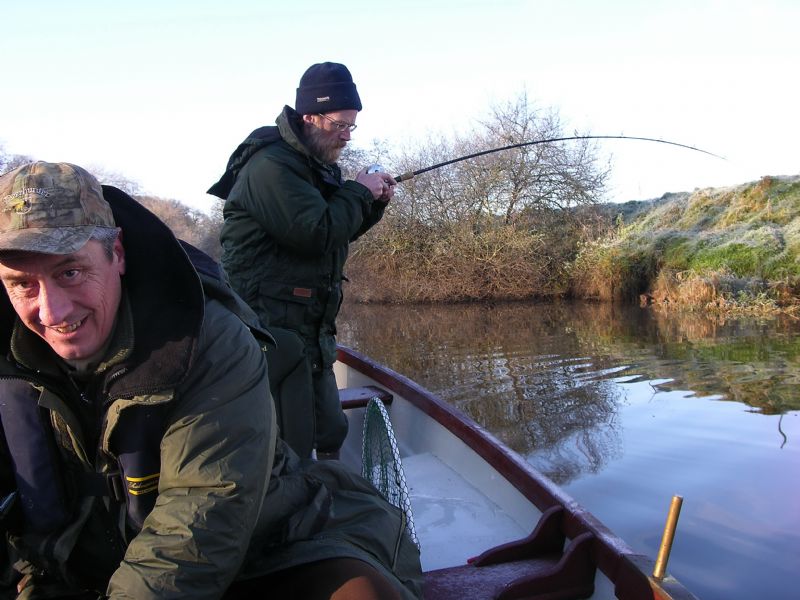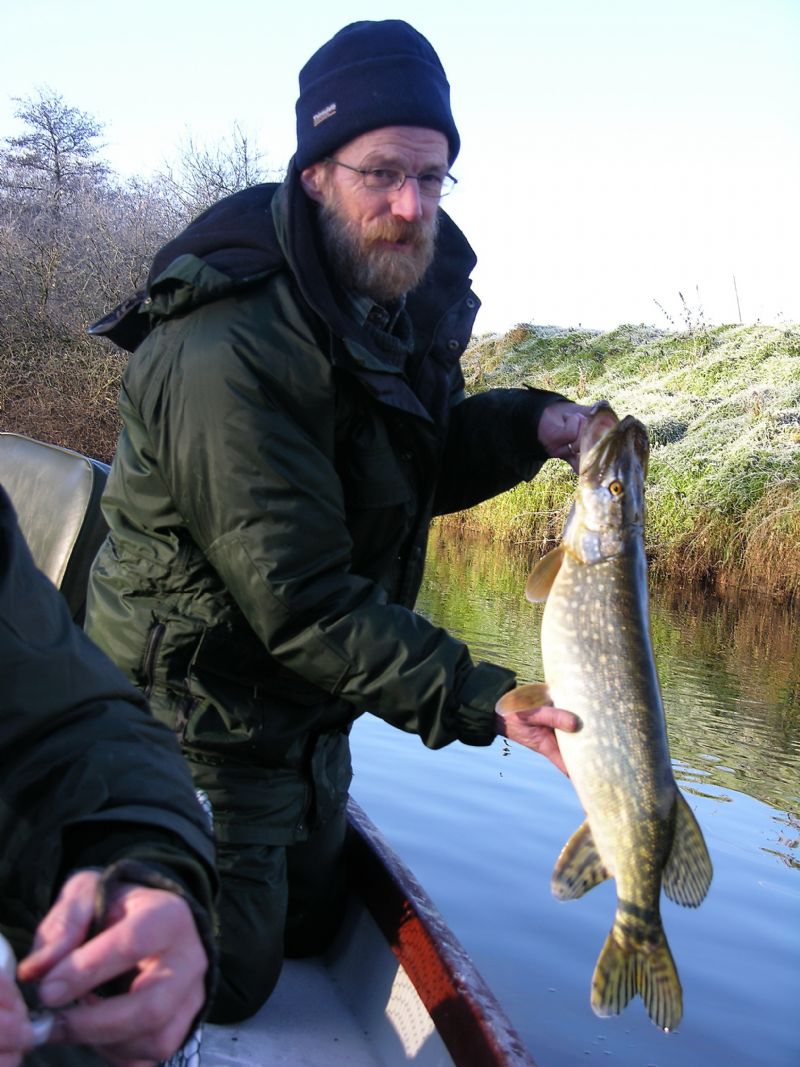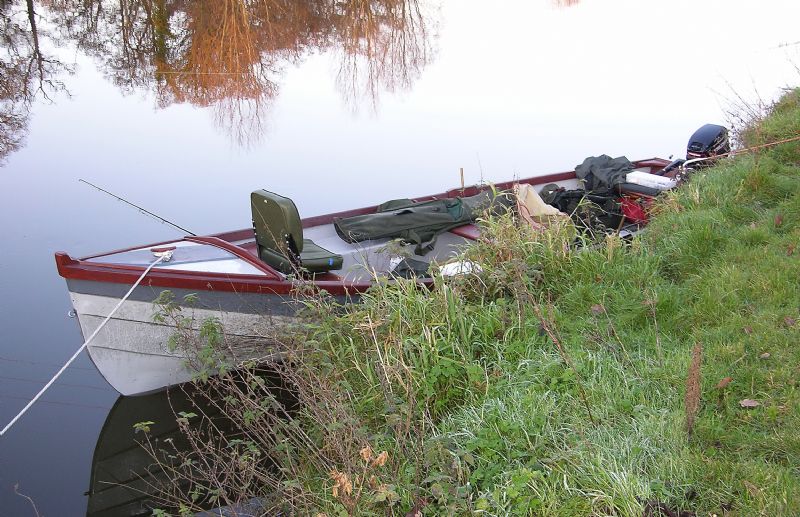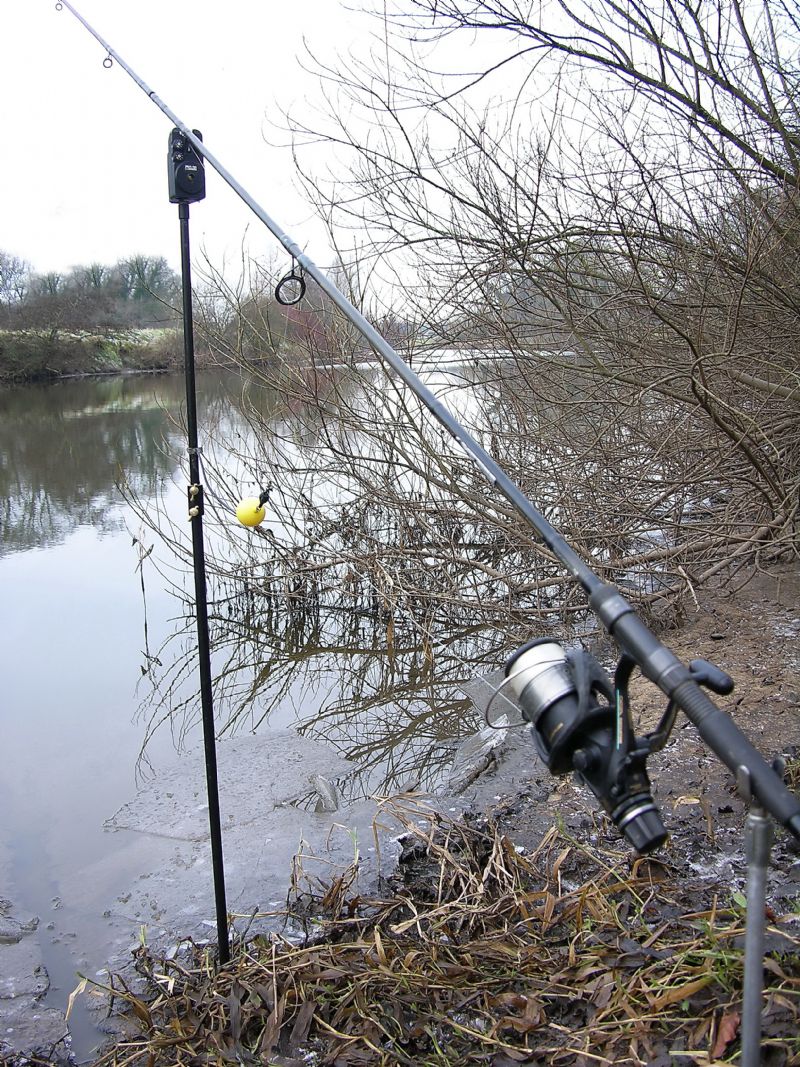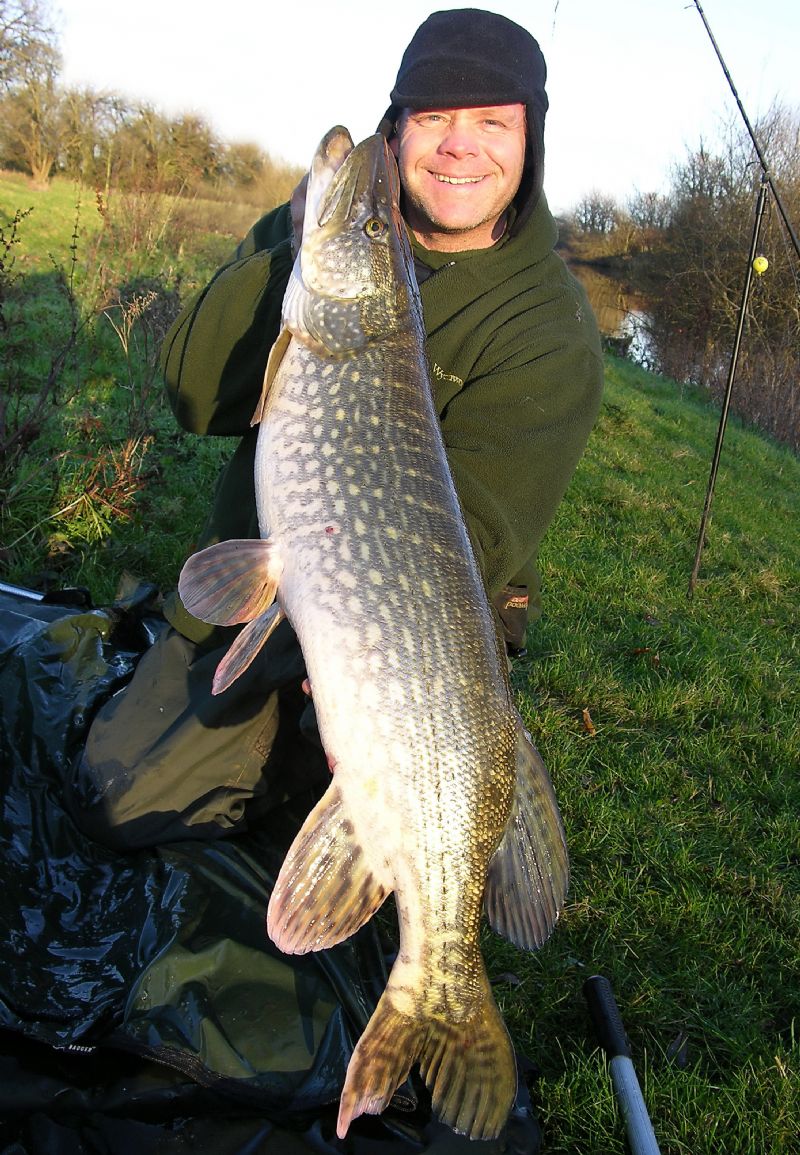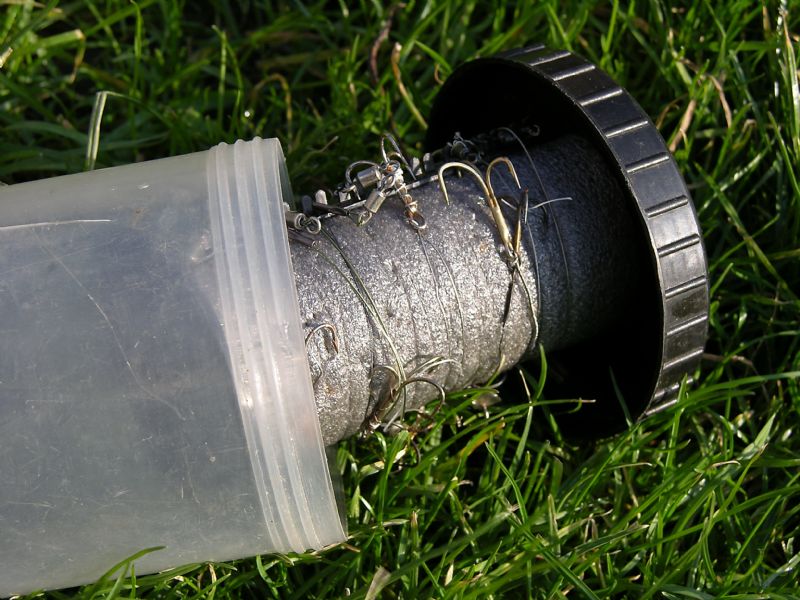Targeting River Pike
Targeting River Pike
Targeting Pike on the fly, from boat, shore or float-tube is arguably the most rewarding method available to the Pike angler.
However, as exciting as these fabulous predators on the fly can be, I understand that this is not every Pike anglers’ cup of tea.
The majority of “pikers” on the Irish angling scene prefer, and do extremely well with standard lure fishing, trolling and dead-bait tactics, and rightly so.
These are the recognised methods that, over countless years, have produced some of our biggest Pike on record. With this in mind, my travels have taken me to a local river venue where I can hopefully put some of these methods to good use.
The trip
I realise that to the experienced Pike angler, I will not be covering anything new or ground-breaking, but, from a great deal of feedback, it’s clear there are many youngsters and newcomers to this discipline that readily welcome tips on Pike angling methods and safe handling. Anything that helps beginners to our sport can only be for the greater good.
After several phone calls, I managed to tempt a couple of angling mates to join me on my trip. Tackle sales rep, Joe Wilson and Belfast “Tight Lines” tackle shop owner Alister Smyth. These guys are locally well known, and also experienced Pike anglers that would hopefully pass on a few trade secrets. With my boat launched, the plan was to head upstream, trolling lures whilst using the sounder to search out shoals of bait fish and underwater fish-holding features. On many occasions, especially when fishing a new venue, if you can find the bait fish the predatory Pike will usually be nearby. If trolling did not produce, then the dead-bait rods will be brought out and set up at a likely looking spot along the bank.
Alister Smyth soon finds a fish whilst trolling
The obvious threat with river fishing is flood-water conditions, particularly throughout the winter/spring season. There had been some heavy rainfall earlier in the week, so it was a huge relief to find, on arrival, that the river was in good order.
Personally, I find trolling a tedious affair, but it does cover large expanses of water relatively quickly. Looking for bait fish was the interesting part for me, and as we trolled our way upstream, several reference points were noted on the river bank where shoals of what I assumed were Roach were tightly gathered. One deeper mark in particular, adjacent to an old fence, showed large markings on the sounder and was duly noted for later investigation.
Not a monster, but nice to get off the starting blocks
After several hours trolling, with only one small jack taken by Alastair on a blue and white Bulldog lure, things were looking grim. To add to the problem, we noticed a slight increase in river flow along with a little colour appearing in the water. Obviously the earlier rainfall had begun to find its way into the system. This usually spells disaster, and certainly has a detrimental effect when lure fishing.
With trolling obviously not producing the goods, I made the suggestion that we head downstream and try dead-baiting over some of the previously noted marks where large congregations of bait fish were holding up. This seemed to be the best option under the circumstances, but more to the point, it’s a great deal easier to get the Ulster Fry on, with rods safely locked on rod- rests and sensitive bite alarms set!
Change of plan, with boat moored we can dead-bait, but also get the fry on!
The first mark proved fruitless, but the fry-up and mugs of tea were a welcome break as we sat chatting, and watching the water colour further. Using the boat, it is a simple and quick task to de-camp and move further downstream. Our next point of reference that showed worthwhile markings on the sounder was opposite a small stream. This looked like a potential predator ambush point and holding area for smaller fish should the water levels rise to flood proportions. Thankfully conditions were not quite that bad yet, although the increasing water height and colour was worrying.
With a float paternoster dead-bait on the first rod, and a running ledger “popped- up” dead-bait on the second, hopefully I was covering a number of options. The float paternoster is an ideal method of river fishing. Keeping the rod tip high, with a tight line between rod tip and float, it offers an extremely sensitive method of bite detection. The lead weight can be increased according to river flow, keeping the rig in position, but allows the dead-bait to move erratically in the current. An obvious attraction to any Pike seeking out wounded prey. With the rod tip placed high, the main line is held above the water surface, avoiding line drag. Any slight movement of the mainline between float and reel is instantly acknowledged on the alarm.
With rod-tip high, the main line remains out of the flow and tight to the top of the float
The running ledger is a simple but equally effective method, offering little resistance to a wary predator. Pike will pick up a static dead-bait after homing in on the scent, but the bait can be made more enticing with “pop-up” methods using foam or balsa inserts. Pollen are a favourite choice for this style of dead-baiting as they tend to be naturally buoyant. The old method of injecting air into the body cavity with a syringe works well with Roach dead-baits. Obviously, if the river-bed suffers from dense weed growth, “popped-up” bait will be advantageous in rising above any low-lying obstructions.
With a float fished Roach placed tight over the inside drop-off ledge and a popped up running ledger at the mouth of the stream; it was now a waiting game. Putting the kettle on is a time honoured way to pass the time, and usually prompts the first run of the day. We were not disappointed, as half-way through lighting the stove, my alarm screamed out a single tone, indicating a strong run on the running ledger method. I never allow Pike time to play with a dead-bait, but strike immediately. In my opinion, the old wives tale of Pike killing a prey, and then turning it in its mouth before swallowing may have some truth, but it is much better to hit early and hopefully avoid deep hooking.
Superb conditioned, hard-fighting river fish
The Pike offered enough resistance to bend my powerful dead-bait rod well into the butt section. From past experience this usually indicates a twenty pounder, but whatever the size, she was without doubt, a decent double-figure fish. A spirited scrap ensued, and by the second attempt, Alister safely and expertly slid the net under a sizeable, scale perfect specimen.
With the netted fish placed on the weigh sling and padded mat, she was quickly un-hooked, weighed, photographed and returned with minimum handling. She tipped the scales on the right side of twenty four and a half pounds. Apart from a dropped run to one of Alister’s rods, we only had two fish on this session. To be perfectly honest, I would endure a week of blanks these days in order to land such a well conditioned specimen!
Delighted to find a twenty-plus
Tips
Keep an eye on the weather. Unlike loughs and lakes, rivers are a great deal more susceptible to increased rainfall. Sudden, rapid changes in water level or temperature can destroy a days angling.
Plumb the depths on a new venue. Most rivers will have well defined ledges and “drop-offs”. Ledges offer partial camouflage and background for Pike to hunt along and use ambush tactics to the full. Deeper holes will also collect dead or dying fish pushed along and deposited by river currents. Pike are clever enough to scavenge these features on a regular patrol.
Small streams and back “Eddys”offer refuge for baitfish when the river rises. These can be hot spots for predators.
Deep-water under your feet on the bank may indicate an undercut. Fish will lie in these eroded areas. During a flood on the River Bann below Toomebridge, I once witnessed a large Pike hooked and landed two feet from the waters edge. She was lying below the angler’s feet! How many similar fish have we walked past or cast over on our travels? It always makes me laugh when I see anglers on my side of the river bank cast to the far side, and guys on the far side cast over to my side!
Careful and quick un-hooking will give Pike the greatest chance of survival. Holding a fish below the chin will allow access to the mouth cavity, but be aware of exactly where the hooks are! If a hook is deep in the throat area, it can be easily but carefully accessed through the gill rakers. On most occasions with a deep hooked fish, a gentle, careful steady pull will reveal the hook for easy removal. The lower treble should always be barbless. Avoid contact with sharp gill rakers and delicate gill filaments.
As with all species, release a Pike with its head facing upstream, holding the fish in an upright position until it is well recovered.
Store wire traces and hooks in a rig-bin or similar
Tackle
Personally, on the rare occasions that I decide to troll a lure, I use a light-medium jerk bait rod. Casting is un-necessary, and the short rod-butt is handy and un-obtrusive on the boat.
Standard dead-bait rods, 11-12 feet with a test curve of 2.5-3 lb are ideal, anglers personal choice of course. There are numerous high quality tackle items on the market these days to suit all budgets. Team these up with suitable reels loaded with a MINIMUM of 12lb nylon. Quality braid of similar diameter but higher b/s is a popular, and in my opinion wiser choice.
Recommended kit
Recommended rods....JRC Extreme 3.25lb Rod - Black, 12 Ft
Recommended reels....Penn Affinity LC 7000 Spinning Reel-30lb - Black orPenn Affinity LC Limited Edition 7000
(very sexy) or Abu Garcia Cardinal STX 60 CARDSTX60
Weighing scales....JRC Reuben Heaton Fishing Scales - Silver, 120 lb
Alarms....JRC Radar DSI Alarm Blue - 1247886 or Delkim Ev-Plus Bite Alarm (Purple)
Un-hooking mat....JRC Mega Mat
Landing net....<JRC Contact Landing Net - Black, 42 Inch
Drop-off indicators....Fox Predator Pike Drop Arm Indicator
Recliner Chair....JRC Stealth X-Lite Recliner Chair - Green
Obviously these are only recommendations, but this kit or similar will get you up and running.
Essential items are quality, reliable bite alarms, spare batteries; drop off indicators weighted enough to indicate a drop back or slack line bite, as well as a gentle take or full blooded run.
Other essentials are long artery forceps, barbless treble hooks (crush the barb with pliers) for simple, quick un-hooking. Barbless hooks can be held in place on a dead-bait with fine elastic thread, the type used by shore anglers.
Obviously, wire traces or similar are necessary. A large specimen type knotless net, as well as a weigh sling and weighing scales if you wish to keep an accurate record, and a padded mat to lay the fish on whilst un-hooking.
Don’t forget a camera.
Always practice safe handling, catch and release. Our Pike are a precious resource.




